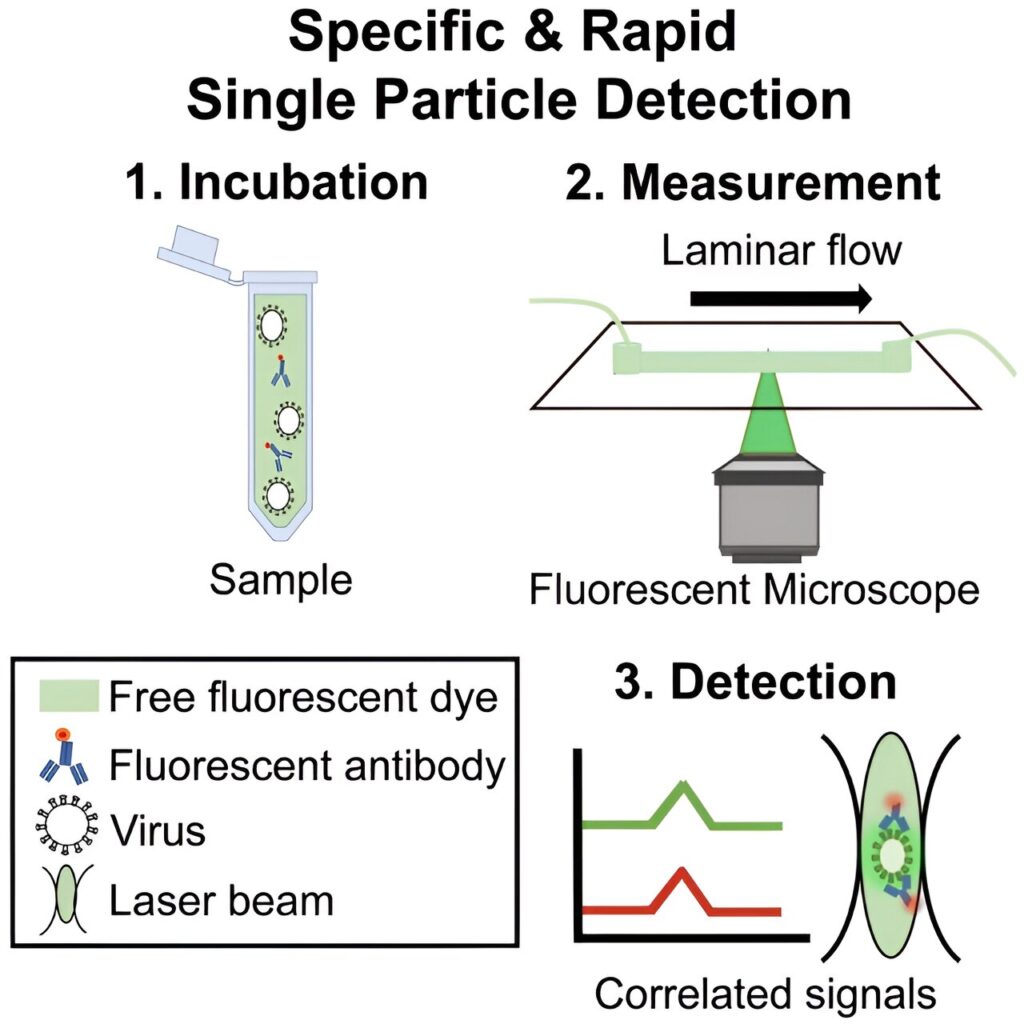A new method for quickly and accurately detecting nanoparticles and viruses marks a major advancement in virus detection technology, merging confocal fluorescence microscopy with microfluidic laminar flow. Unlike traditional PCR methods, which are slow, laborious and require specialized equipment, this approach can swiftly identify single virus particles in a cost-effective manner using the recently introduced 3D-printed microscopy approach, Brick-MIC.
The research paper titled “Rapid and specific detection of nanoparticles and viruses one at a time using microfluidic laminar flow and confocal fluorescence microscopy” is published in iScience, and the novel 3D printed microscopy approach Brick-MIC is summarized and detailed in the research paper titled “Single-molecule detection and super-resolution imaging with a portable and adaptable 3D-printed microscopy platform (Brick-MIC),” published in Science Advances.
This innovation significantly improves sensitivity and specificity in virus detection, potentially changing how we monitor health and respond to viral outbreaks. Its portable design makes it suitable for wider clinical use, enhancing public health responses in an increasingly complex landscape of viral challenges.
In a major breakthrough for virus detection technology, Prof. Dr. Eitan Lerner and the Ph.D. candidate, Mrs. Paz Drori from the Hebrew University and their team together with their colleagues in the research group of Prof. Dr. Thorben Cordes from Ludwig-Maximilians University Munich and the Technical University Dortmund have developed a new method for quickly and accurately detecting nanoparticles and viruses, one at a time.
This innovative approach combines confocal fluorescence microscopy with microfluidic laminar flow, offering an effective alternative to traditional methods.
Current virus detection often relies on polymerase chain reaction (PCR), which is as accurate as it can get, but it can be slow, as well as laborious, and requires specialized lab equipment. While antigen-based tests provide faster results, they tend to be less sensitive and less accurate. Prof. Lerner’s research tackles these challenges by using a confocal-based flow virometry that can swiftly detect specific single virus particles.
The method combines laminar flow in a microfluidic channel with fluorescence signals from free dyes and labeled antibodies, providing important insights into nanoparticle characteristics.
The researchers teamed up with Prof. Dr. Eran Zahavy’s group from the Israel Institute for Biological Research (IIBR), where they were able to work with various viruses that include the SARS-CoV-2 Spike protein. Together, the team tested this method on fluorescent beads and various viruses that included the SARS-CoV-2 Spike protein, demonstrating its impressive accuracy and detection specificity.
A key feature of this new assay is rooted in the option to employ hydrodynamic focusing, which greatly improves sensitivity for detecting viruses at clinically-relevant concentrations. This technology is designed to be portable and user-friendly, using an affordable 3D-printed Brick-MIC setup, rendering it accessible for wider use in clinical settings.
This research opens the door to a new era of rapid and precise virus detection, which is closely aligned with the principles of individual targeted health care. By enabling quick and specific identification of viruses and nanoparticles, this method is envisioned to facilitate personalized monitoring of health conditions at the individual level.
Such precise detection allows health care providers to tailor interventions based on specific patient needs, ensuring that treatments are more effective and timelier.


